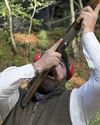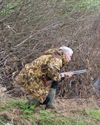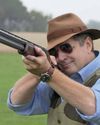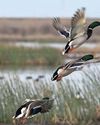This month, the Botley boys focus on the fine art of chequering, providing a ‘how-to’ guide and discussing the merits of lasers versus good old-fashioned hand-cutting

Despite the spelling, the fact remains the same – chequering is the formation of little square diamonds (or more increasingly, any shape that gives you some grip) on the parts of a gun to which your hands connect.
‘Proper’ chequering
By ‘proper’ I mean the truest type of chequering, which is little diamonds cut into wood by hand. This is an art form in itself, and in its purest, most exquisite format can make a gun truly spectacular.
The concept is simple:
1. Buy or make chequering tools. There is limited availability of off-the-shelf tools, with only one or two manufacturers on hand. The tools are actually of a very good quality, but the ability to obtain the necessary tool for the job from the UK can be difficult. This, along with the occasional need for a tool that simply doesn’t exist off-theshelf, leaves us with the option of making our own tools. This is simply done – as long as the required tools and necessary ability are available. Selecting the required metal and shaping it into a chequering tool can be rather entertaining, and as these tools last a fair while, it is a worthwhile investment to the workshop tool stock. The final option is for a more modern approach, that of the rotary chequering cutter; this is something that I am not familiar with in use, but have witnessed being used. They produce results extremely fast with a satisfactory, if not a touch coarse, finish.
Bu hikaye Sporting Shooter dergisinin October 2017 sayısından alınmıştır.
Start your 7-day Magzter GOLD free trial to access thousands of curated premium stories, and 9,000+ magazines and newspapers.
Already a subscriber ? Giriş Yap
Bu hikaye Sporting Shooter dergisinin October 2017 sayısından alınmıştır.
Start your 7-day Magzter GOLD free trial to access thousands of curated premium stories, and 9,000+ magazines and newspapers.
Already a subscriber? Giriş Yap

RSPB gives mixed message on shooting
Having recently attended the RSPB’s virtual AGM, Conor O’Gorman discusses the outcome of the charity’s year-long review of game bird shooting

Causeway for concern
Alan Jarrett’s renewed interest in reading takes him down memory lane to an offshore island duck flight that very nearly ended in disaster

Through a purple patch
The Garrows Estate is taking a conservation-focused approach to restoring the wildlife populations and biodiversity on the Scottish heather moorland.

When the wheels fall off
Losing form on a day’s shooting can be infuriating, especially if you’ve been shooting like a god up to that point. Simon O’Leary looks at some common causes and how to remedy them

Beaches, books & bad behaviour!
The annual Kay family vacation to Northumberland offers a chance to give the cockers a blast on the beach – although they don’t always shower themselves in glory, as Ryan Kay recalls...

Using the Stop whistle
Now you’ve instilled the basics, it’s time to up the ante with some more tricky distance work. Howard Kirby explains how to take the core Stop whistle command to the next level

The humble teal
They may be tiny, but as far as Rupert Butler is concerned, the appeal of this little duck is huge. He recalls some of his most memorable nights in pursuit of these aerial acrobats

Fab all-rounder
Mike is impressed with the Fabarm Elos B2 Field Notte, which offers great value for money, is suited to fieldwork or clays and is future-proofed for use with steel in all choke constrictions

CALL OF THE WILD
Dom Holtam reconnects with one of the purest forms of shotgun shooting as he walks-up woodcock over pointing dogs in the Scottish Highlands

A yen for the Fens
Tony Jackson recounts a memorable duck flight over an area of Fenland in Norfolk with his friend and author, the late Alan Savory